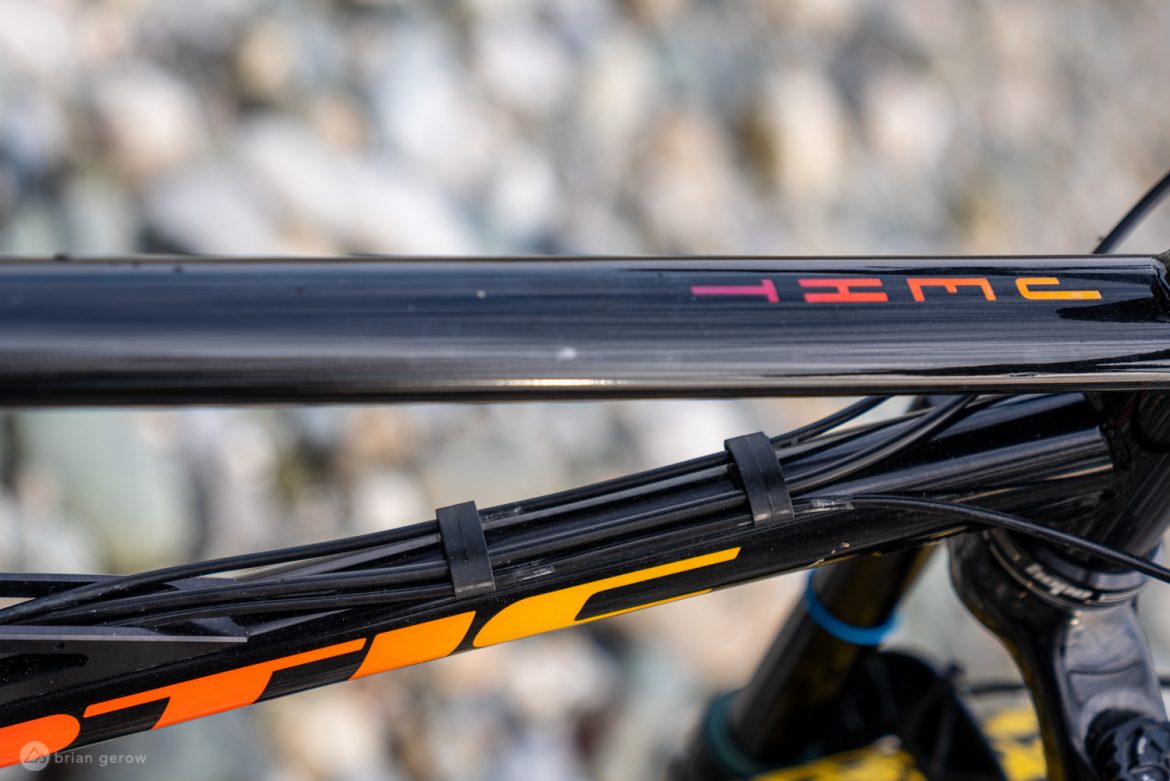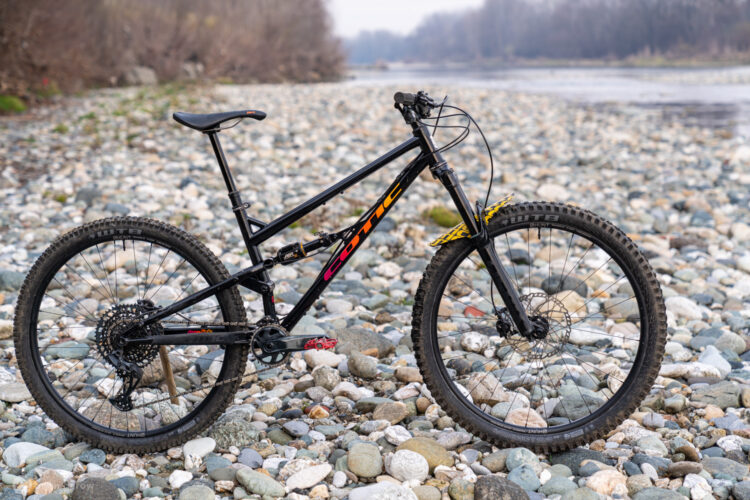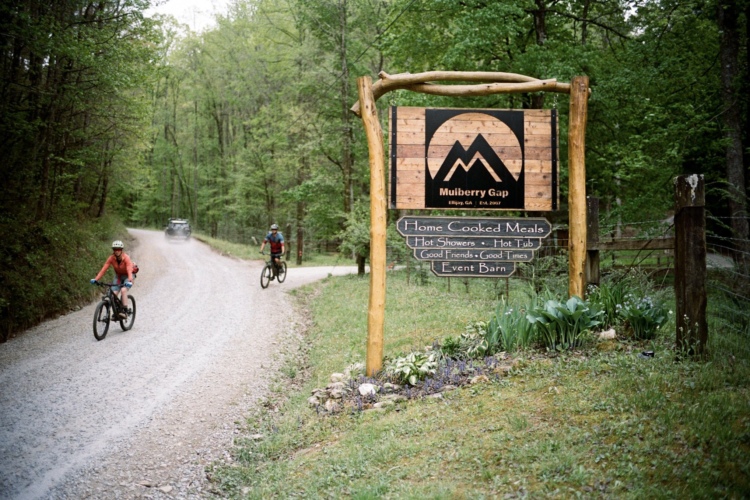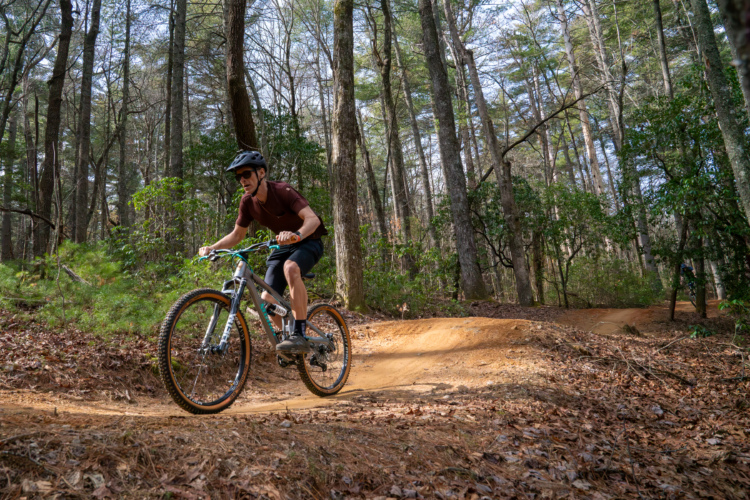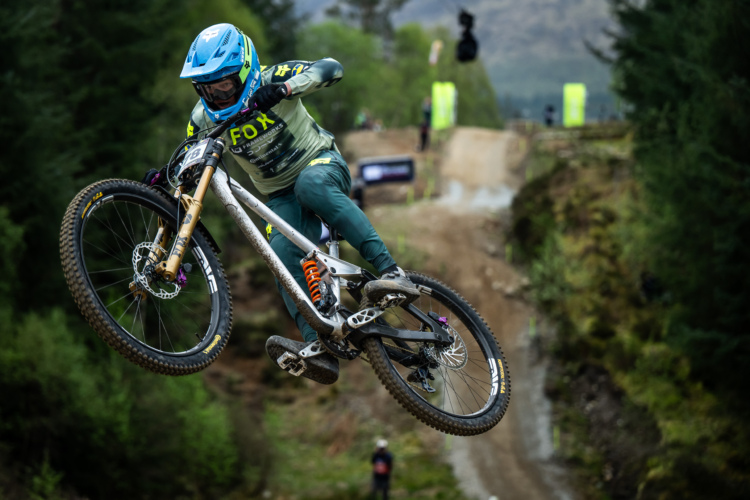
Beyond the smooth and forgiving ride feel, and the fork-stanchion-sized tubes, there’s something special about steel bikes. Like well-roasted coffee or a balanced bottle of wine, they can catch your fancy in a way that other materials don’t. If you’re smitten on steel, the Cotic Jeht is a bike you’ll want to check out no doubt. If you’re not sure about iron-alloy tubes, know that this 140mm single-pivot 29er weighs just under 33lbs. fully built, and offers as much fun as similar alloy and carbon bikes we’ve tested. Possibly more.
Frame highlights

Mid-travel bikes are popping up all over the place, though few are made from Reynolds 853 Ovalform tubing. Cy from Cotic has selected each tube to provide stiffness and flex in all of the desired areas and directions, and it shows on the trail. This little single-pivot bike has plenty of pop available when you want it, and some of that springy sensation likely comes from the material’s ability to load up with energy and return it.
The 15mm BB, Droplink pivots, and shaped tubing keep the frame solid, and I have yet to flex the rear wheel enough that the tire contacts the chain or seat stays. I certainly can’t say the same for every carbon fiber bike I’ve tested.
Heavy drinkers might be a little frustrated with the Jeht’s water bottle placement, as there is only space for a kid-size bottle inside the triangle and one under the down tube for folks who like to wipe the cow shit off the mouthpiece before taking a sip. I managed to fit the smallest Fidlock bottle available into the front triangle but had to use a rubber band to keep it from ejecting. Large and XL frames can fit a 750ml bottle.

Jeht frames feature fully external cable routing, apart from some brief chunks in the seat tube and seat stay, and external BB cups to keep maintenance quick and painless for home wrenchers. The ISCG-05 tabs allow for a full bash guard setup, or just a chain guide like this build has.
Cables and hoses are held in place by some broad c-clips which keep things tidy and quiet. All of the small parts on Cotic frames, and any associated touch-up paint colors, are available on their spares page.
This frame can be built up with 140 or 150mm of fork travel, and our test bike came with the longer option. Geometry across all four sizes is unquestionably party-focused, and the size medium that Cotic sent us has a 75.5° seat tube angle to follow its 64.5° head tube lean. The medium frame reach is a long 467mm that feels appropriately balanced by the surprisingly stabilizing 447mm chain stays that come on all frame sizes. While these may look like the numbers from a 160 or 170mm frame, they make for a great-riding 140mm platform.
Suspension

Like nearly every steel full-suspension frame, the Droplink rear end is a linkage-driven single-pivot that keeps things as simple and lightweight as possible. The linkage has remained silent throughout testing, despite my propensity to submerge it in streams and ride in the rain on a weekly basis. This Jeht linkage shows its UK character well in the damp stuff.
The linkage also doesn’t have many pinch points for dirt to gather in, and the high-mounted shock stays fairly clean on muddy outings. The main pivot junction can easily be sprayed out at the end of the ride, and I haven’t had any issues with excessive mud building up at the rear base of the seat post.
You can feel a little lateral flex if you push the tail sideways like you’re trying to rip the tire off, and it’s just enough to help the bike hold its line on rougher trails. Steel is often loved for its forgiveness and vibration dampening qualities, and those properties are well utilized with this frame, but not to the detriment of power transfer and performance.

Without knowing the leverage curve for the Jeht, it’s clear that the bike has a fairly linear rate of progression. In short, there is plenty of progressive energy resistance in the system, and it seems to ramp up in a linear fashion throughout the travel. I had to run far more air pressure in the shock than I typically would with a similar shock on a 140mm bike. The rear end definitely depends on that air pressure for support, which means riders can precisely tune in the overall feeling they want to get from it. If folks prefer a super-pogo tail, add a volume spacer to the shock, then crack open the rebound and let the air spring do its thing. If traction is the goal, a little less pressure and a slightly slower rebound will do the trick.
I would recommend all Jeht riders play with volume spacers in the shock, as it is fairly easy to find the end of that 140mm on rowdy singletrack, even with a low sag measurement. The Cane Creek Double Barrel IL is relatively adjustable and does a good job slowing the last bit of travel to prevent an unsightly clang as the cranks near the ground. I would buy the most adjustable air shock available for this bike since the suspension is relatively sensitive to shifts from the compression and rebound circuits. Hence, all the clicks will count and just a few changes can be felt.
If you want to go full steel-springy with a coil shock you’ll need to look elsewhere, as this platform is undoubtedly designed for air cans alone.

Again, I didn’t receive the suspension kinematics for this bike, so I’ll save my anti-squat and anti-rise impressions for the following section, as those are most important on the trail.
Hours of singletrack

I’ll start with the hard part: Climbing. At the exact same weight as the 140mm carbon bike I recently tested, the Jeht has no issue getting up to cruising altitude. The initial suspension movement is notably supple, and I regularly employed the shock’s climb-switch for smoother ascents. With the switch left open for traction on steeper stuff the suspension is active like a puppy, and lets the tire track the trail well for more technical climbs.
On steeper slopes where you need to stand and pedal the bike maintains a fairly level posture, not kneeling down much when you throw in all the watts to clear something.
The Jeht frame’s stretched wheel base of 1255.8mm had me a little concerned for its handling capabilities prior to hitting the trail. With the saddle slammed forward for a wheel-planting climbing position the bike is fun to maneuver between rocks and around switchbacks. I’d love to see that seat tube angle tip forward another degree or two so that the saddle could use a wider range of its fore and aft adjustment.

While I wouldn’t necessarily turn up to a local enduro race on the Jeht, it is certainly a sturdy platform to sprint aboard. I learned to sprint while racing on the road, and was taught to pull directly across the bike between my opposing hand and foot, with the idea that you’re trying to rip the bike in half. This is where you can feel the steel in this bike; when you really feed it all the oats and tell it to run. The felt-sense of steel is often somewhat subdued under heavy tires and active suspension, but when you pull as hard as you can across this bike its natural springy nature comes to the fore. If you haven’t yet experienced aggressive riding on a steel bike, I would highly recommend giving it a try. This one feels fantastic.

On the way back to base camp the Jeht shows that its heart is more akin to one of a rabbit than a rhino. You can feel the trail a touch better through the pedals than you might with other suspension platforms, and that feedback works both ways as the bike is happy to pump up to speed.
I didn’t expect that a steel 29er with long chainstays would be this much fun to throw around, but the Jeht is. The higher shock pressure provides a formidable spring to push against, and the return energy allows for some stupid-fun descending. While you can point the bike through a rough track and hold on, it clearly would prefer to bunny hop the rocks and land ready to pounce again. The long, balanced frame and slack head tube are plenty stable for fast riding, but the rabbit inside this bike reminded me countless times that speed isn’t the only way to have fun.
Jumping between rock sections is a load of fun no doubt, and the Jeht is also capable of jumping across actual jumps if that’s your jam. The balance of this medium size frame shows its worth between the lip and landing, making flight-time quite comfortable for less experienced huckers like myself. I’ve always preferred speed over hangtime, but with this bike that preference has shifted.

Fast turns are also aided by the balanced nature of the Jeht, closing out its overall trail character with a well-rounded manner that makes you want to get out and ride it. I’d bet that the anti-rise value is more than 100%, as the rear end does squat slightly when the brakes are loaded up into a turn. That compression can then be carried through the turn to pounce out the other side. With plenty of distance between the tires, the Jeht feels solid when leaned into a corner for maximum speed no matter how smooth the track is. You don’t have to pay much attention to the smaller bumps and stones at the apex, since the suspension remains active throughout the travel, creating ample grip.
Build spec
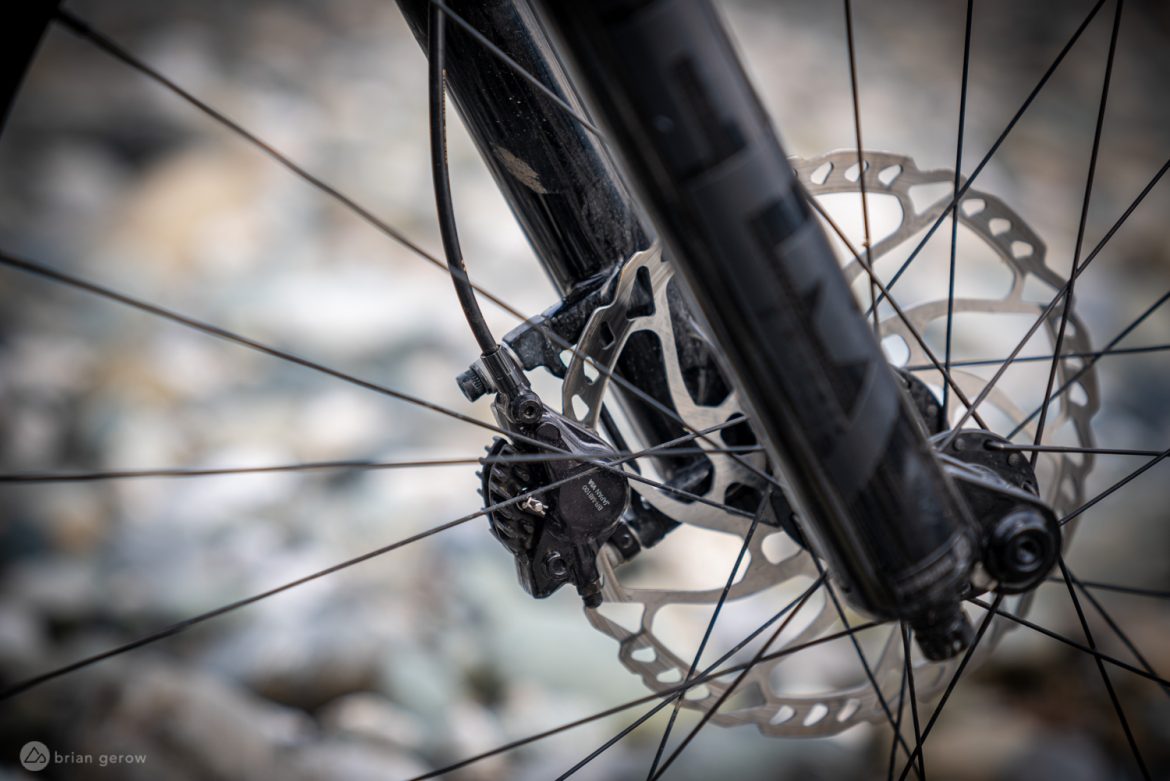
The test bike I rode is what Cotic calls the Gold Eagle GX 1×12 build spec, and it retails for £4,349. Since everyone everywhere is out of bike components, this build is a little different from the stock option. It has a full SRAM GX drivetrain, Cane Creek Helm V2 fork and DB Air IL shock, a OneUp dropper, and a nice set of Hunt Trail Wide wheels with notably fast engagement.
The build also includes a set of Shimano XT two-piston brakes. I ended up swapping in an XTR four-piston up front to add some stopping power on a few laps and would mount up a total of eight pistons if this was my personal bike. It was good to get a reminder of how two-piston brakes can become overwhelmed on longer descents, and how much more tired your hands can feel at the end of the trail. Cotic owner Cy Turner said that “The base builds are just a guide for people who don’t want to tinker. You could spec Guide RSC brakes on that bike for a £100 upcharge, or Hope 4-pots in your choice of color for £188.”
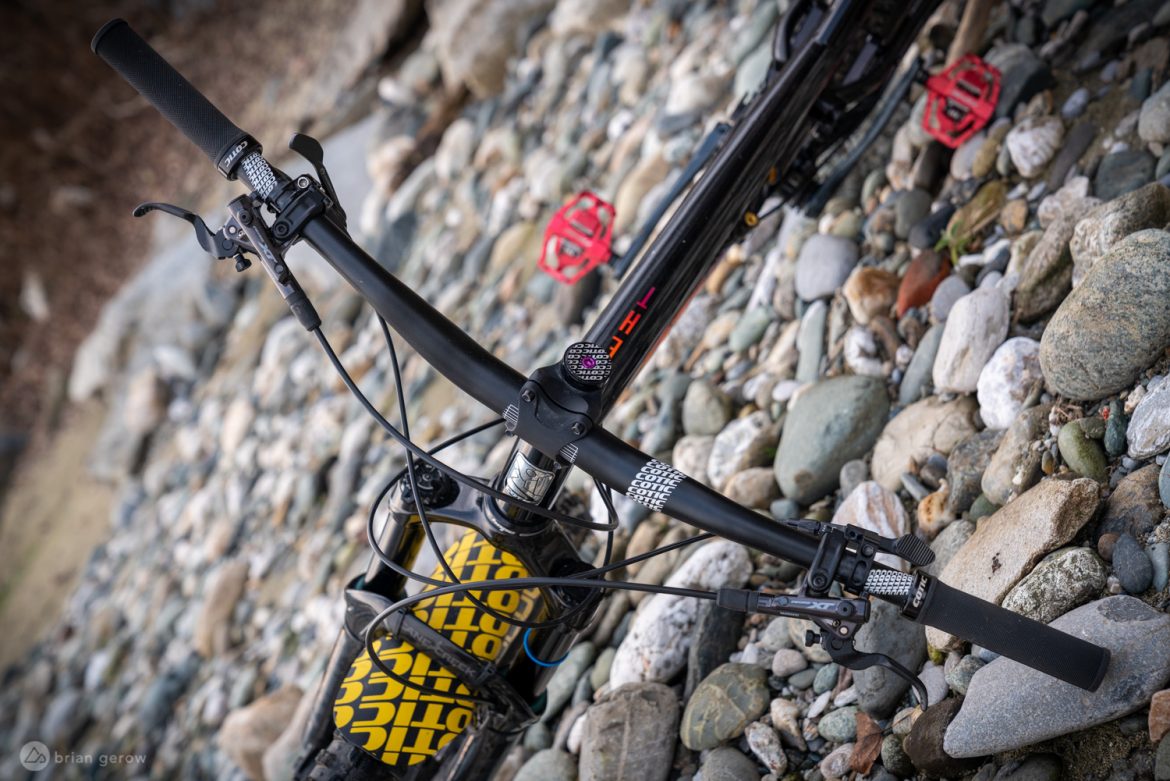
As usual, the tires also didn’t last beyond the first few descents. I managed to puncture the WTB Vigilante and Verdict, and their Light Slash Guard casing was oozing sealant at the end of the first few runs. I then mounted up some Onza Porcupine RC rubber for the rest of my time with the bike. With the same pressure in the tires, on the same trails, no more sealant spewed forth. Jeht buyers can upgrade to a tougher rear tire casing for no extra charge, and I’d highly recommend it.
The Cotic branded bar, grips, and stem felt well suited to the bike, and the 35mm stem helped bring my butt and hands a touch closer together across this nice long frame.

The short 425mm seat tube made space for a sweet 180mm dropper post that helped the saddle disappear on descents. The upper pivot does require a tube cutting across the inner seat tube, so shorter-legged riders will want to check the maximum insertion measurement for the frame when considering dropper options.
Conclusion

So this magical steel trail tool needs a better sippy-bottle solution and some appropriate brake calipers, and despite those small complaints it’s a lovely bike and build. Every bike asks to be ridden a little differently, and this one leans hard in the fun and adventure camps. I’d be happy to ride the Jeht deep into the woods for an all-day fest with friends, and maybe we’d run into some of its rabbit soulmates along the way.



